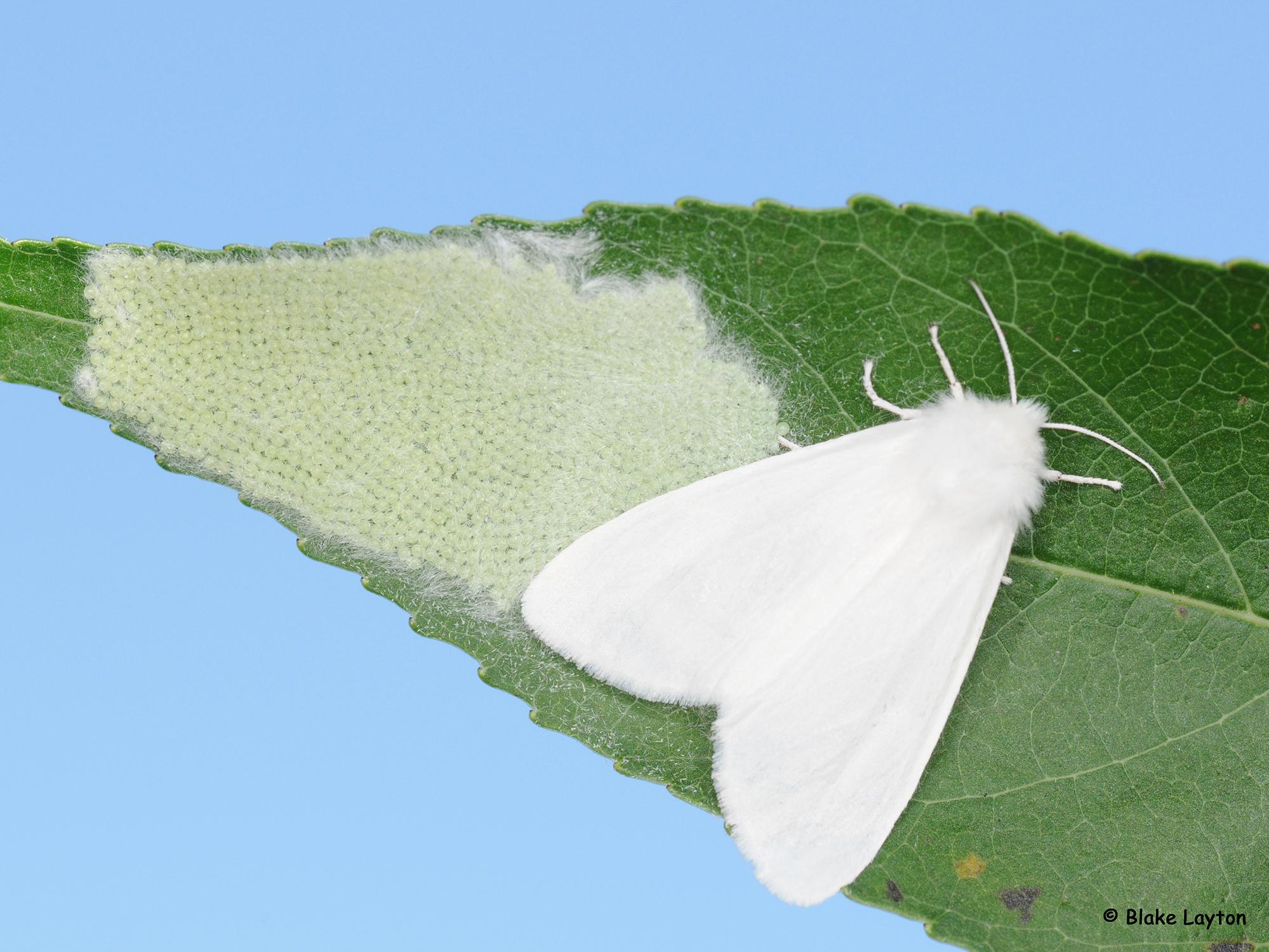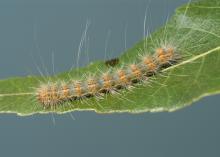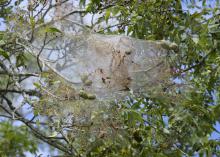Information Possibly Outdated
The information presented on this page was originally released on August 29, 2018. It may not be outdated, but please search our site for more current information. If you plan to quote or reference this information in a publication, please check with the Extension specialist or author before proceeding.
Many white tents in trees show high webworm count
MSU Extension Service
STARKVILLE, Miss. -- A tent for camping in the woods can be a good thing, but a tent filled with caterpillars in a pecan tree can be bad news for homeowners.
Fall webworms are having a big year across Mississippi, with higher than normal numbers of the caterpillars being seen in pecan trees. Some of the pests also are appearing in persimmon, sweetgum and other trees.
Blake Layton, an entomologist with the Mississippi State University Extension Service, said these insects are common in the state every year, but they are more abundant some years.
“Fall webworms overwinter in the state as pupae living in the leaf litter beneath trees. Despite their name, they start showing up in May,” Layton said. “We start seeing early generations in mid-Spring, and by August, we’re probably seeing the third generation.”
Fall webworm moths are usually pure white, and they lay egg masses on leaves. When the eggs hatch, the caterpillars spin silk to create a web. Large or multiple egg masses can result in very large tents.
“Unlike some of the other tent caterpillars, these stay inside the web and mostly feed on foliage inside the web, using the webbing for protection from predators,” he said. “Caterpillars may leave the tent to feed on their own during the last few days of their life as a caterpillar, but then they wander on down to the leaf litter to pupate.”
Populations are cyclic, with periodic outbreaks followed by declines due to increases in predators, parasites and pathogens. They occur through much of North America and into Canada, so a cold winter does not limit their numbers.
The caterpillars are an important pest in commercial pecan orchards.
“If trees are heavily defoliated, the nuts won’t fill out well the year of the infestation, and productivity may be lower next year,” Layton said. “Commercial growers usually spray for enough other pests that they have coincidental control of the webworms.”
In noncommercial settings, the large, white tents in trees are unsightly, but they threaten only small trees if the caterpillars are allowed to consume all the foliage. Layton said it is hard to find treatments that are logistically practical in home situations.
“Treatment is most likely to be beneficial on young, heavily infested trees that are just getting established,” he said.
Jason Gordon, Extension forestry professor, is getting many questions about this pest this year, as people are concerned about defoliation of their trees.
“While the caterpillar can cause some defoliation, it is usually not enough to kill the tree,” Gordon said. “Trees defoliated for several years in a row can start to decline, but they can tolerate two to three years.
“My advice this year is to wait it out if the tree only has one or two webs and has not been infested over several years. Otherwise, the webs can be mechanically removed or sprayed with an insecticide.”
Insecticides with the active ingredient spinosad are effective against this pest, but the challenge is reaching all the tents and piercing them so the chemical can work on the caterpillars.
“A common homeowner treatment is to burn them out, but this does more harm than good,” Layton said. “The foliage the caterpillars ate will regrow, but if you burn it, you killed the twigs.”
Mechanical treatment is more effective. A person can rip a hole in the tents with a clothes hanger or similar device on a long pole, allowing predators to enter the web. Homemade devices can also wrap the tents up and pull them away from the tree.
“Doing nothing is the most common and usually the most practical approach to dealing with fall webworms on large landscape trees,” he said. “Trees that are small enough can be treated with sprayers.”
Released: August 29, 2018
Select Your County Office
Related News
May 15, 2025
June 18, 2024
March 13, 2024
March 5, 2024
August 28, 2023
Pages
Related Publications
Publication Number: P4115
Publication Number: P2331
Publication Number: P2369
Publication Number: P4099
Publication Number: IS1664





